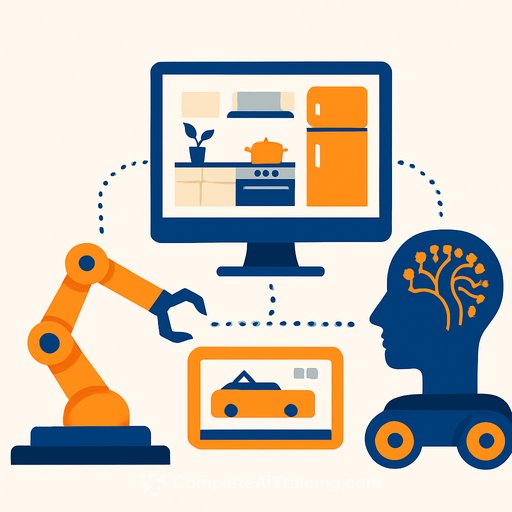DiffuseDrive Tackles Data Scarcity in Robot and AI Training
Robots and artificial intelligence systems require vast amounts of data for training. Synthetic data must be highly realistic to be effective, but gathering real-world data is often costly and slow. Traditional simulation data, typically created with game engines, falls short due to noticeable gaps when applied to real environments. DiffuseDrive Inc. addresses this challenge by using generative AI to assess existing data, identify missing elements, and fill gaps with photorealistic synthetic data generated through proprietary diffusion models.
Founded in 2023 by engineer Balint Pasztor and physicist Roland Pinter, DiffuseDrive moved from Hungary to San Francisco to scale its solution. Their background includes work on Level 4 autonomous driving for Porsche. According to Pasztor, “Data scarcity is the missing piece to solving physical AI across industries like manufacturing, monitoring, agriculture, and aerospace.”
AI Demands Domain-Specific Data
Pasztor points out that many industries still rely on outdated data models dating back to the early 2010s. Automakers and robotics developers often lack sufficient realistic data tailored to their operational requirements. Traditional synthetic data from simulations doesn’t meet the standards needed for safety-critical applications. Even at major conferences like CVPR, researchers struggle to distinguish synthetic from real data, often scoring only around 50% accuracy.
While some sectors such as self-driving cars and e-commerce item recognition have growing data sets, automation’s potential extends far beyond—but only if it’s trained on relevant, high-quality data specific to each use case.
How DiffuseDrive Identifies and Fills Data Gaps
DiffuseDrive bridges the simulation-to-reality gap by generating data suggestions based on business logic and domain requirements. This approach enables the creation of relevant data sets in days, rather than months or years. Unlike generic AI engines like GPT or DALL·E, DiffuseDrive adds a quality assurance layer tailored to specific applications such as aerospace or autonomous vehicles.
The platform combines classical and modern statistical analysis methods to analyze existing data contextually. It builds out new data points, akin to expanding a point cloud, and constructs decision trees to map data coverage. For example, in Level 2 autonomous driving, DiffuseDrive created heat maps of parking scenarios and object locations, revealing missing data on large, close objects during specific times. Addressing these gaps led to a 40% performance improvement.
Customers Retain Control Over Operational Design Domain Data
DiffuseDrive does not develop domain expertise itself. Instead, it processes its customers’ documentation and real-world operational design domain (ODD) data. Customers remain in full control of their requirements and generate the criteria for synthetic data production. The platform supports semantic segmentation, visual and contextual labeling, and 2D/3D bounding boxes to enrich the data.
Each new image generated fills in missing data points and broadens the ODD knowledge base, ensuring continuous improvement and expansion of relevant training data.
Market Potential and Growth
The AI robotics market is projected to grow at a compound annual growth rate of 38.5%, expanding from $12.77 billion in 2023 to $124.77 billion by 2030, according to Grand View Research. DiffuseDrive’s vision is to provide data for every autonomous system, from large enterprises to individual projects.
The company is currently onboarding its third wave of customers, including drone operators, autonomous driving firms, and security monitoring services. Notable clients include AISIN, Continental, and Denso. DiffuseDrive also sees opportunities in defense, warehousing, construction, agriculture, and healthcare sectors.
At CVPR, DiffuseDrive engaged with 50 potential Fortune 500 customers, many working on both autonomous and stationary robotic systems. Healthcare representatives showed interest in closing the data feedback loop to improve AI applications.
Funding and Strategic Direction
In May, DiffuseDrive secured $3.5 million in seed funding, adding to an earlier $1 million from E2VC. The company also appointed Jordan Kretchmer, co-founder of Rapid Robotics Inc. and senior partner at Outlander VC, to its board. Kretchmer’s experience in robotics investment supports DiffuseDrive’s industry-agnostic approach, spanning manufacturing quality assurance to household picking robots.
Pasztor emphasizes that the key differentiator today is not just synthetic data itself, but the ability to create a data engine that iteratively improves and expands datasets. “Software is developed iteratively, so why isn’t data?” he notes.
For those interested in advancing AI and robotics skills, exploring comprehensive training options can be valuable. Resources like Complete AI Training offer a variety of courses tailored to different AI domains and skill levels.
Your membership also unlocks:









